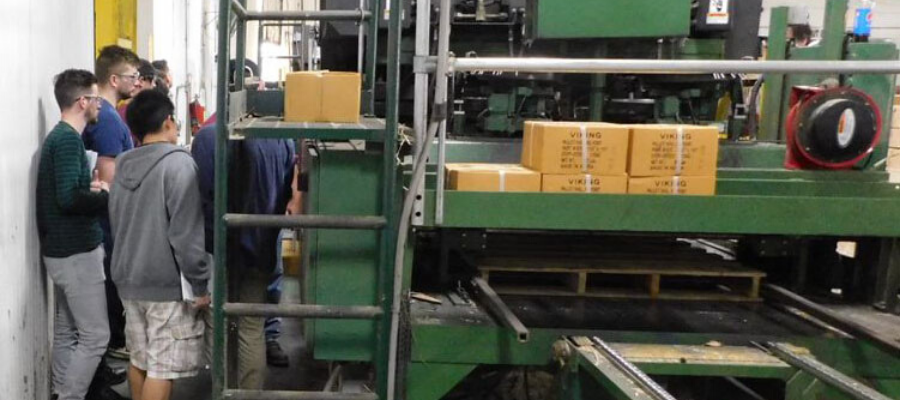
PennTAP was excellent to work with. I liked that they brought college students out to help with conducting the audit. I think that is an excellent way to get them out to see the small businesses of the state!
The Opportunity
Thanks to support from the United States Environmental Protection Agency (USEPA), from October 2016 through September 2018, PennTAP helped four Pennsylvania companies with value stream mapping processes (VSM). VSM is a lean manufacturing tool designed to combine material processing steps with information flow. It helps users create a solid implementation plan that maximizes their available resources and ensures time and materials are used efficiently.
PennTAP’s Role
The VSM was completed through economic, energy, and environment (E3) assessments that paired PennTAP’s energy and environmental expertise with an expert in continuous improvement. PennTAP identified a continuous improvement expert by leveraging relationships with the Northeastern Pennsylvania Industrial Resource Center (NEPIRC) and the Northwest Industrial Resource Center (NWIRC). Both organizations specialize in continuous improvement and have successfully helped manufacturers improve process efficiency.
The Process
The VSM process needs a properly selected team of employees to function optimally. The group needs to be dedicated to the success of the business and exemplify a diverse range of skill sets. It is optimal to have a team consisting of management, operations, and engineering. The decisions of one group member impacts the others and sometimes disconnects occur. The team plays a critical role in explaining the process and providing improvement ideas.
The goals of the VSM were to improve process flow, reduce overtime operation, and streamline process steps. The goals were key to determining what equipment and data needed to be included in the VSM. The continuous improvement expert led the group in data collection.
Examples of the data collected includes the observed touch time, the potential touch time, the employment movement needed, and the waste generated. Once all the data was entered into the VSM model, the group worked together to identify the root causes of the initial problems. Through this exercise at each location, examples of the root causes identified were unbalanced employee workloads, needlessly moving product, long changeover processes, scheduling strategies, and incorrect raw materials. Each root cause was discussed with the team who then brainstormed potential solutions.
The Solution
After reviewing the results of the VSM, an action plan was developed to improve the efficiencies of the processes. Each action plan included a recommended solution, a timeline, lead contact, and the expected outcome for the plan. The overall economic development impact of the four VSM projects has already exceeded $700,000 based upon data from the companies. These benefits include improved process speed, reduced movement waste, increased sales, and energy savings of 264,392 kWh per year. As the companies continue to implement the additional action plans, more economic development benefits are expected.

